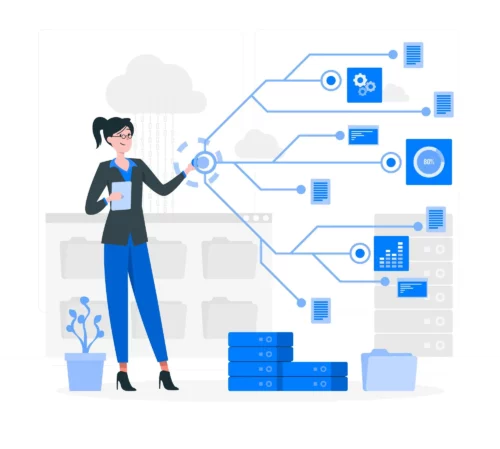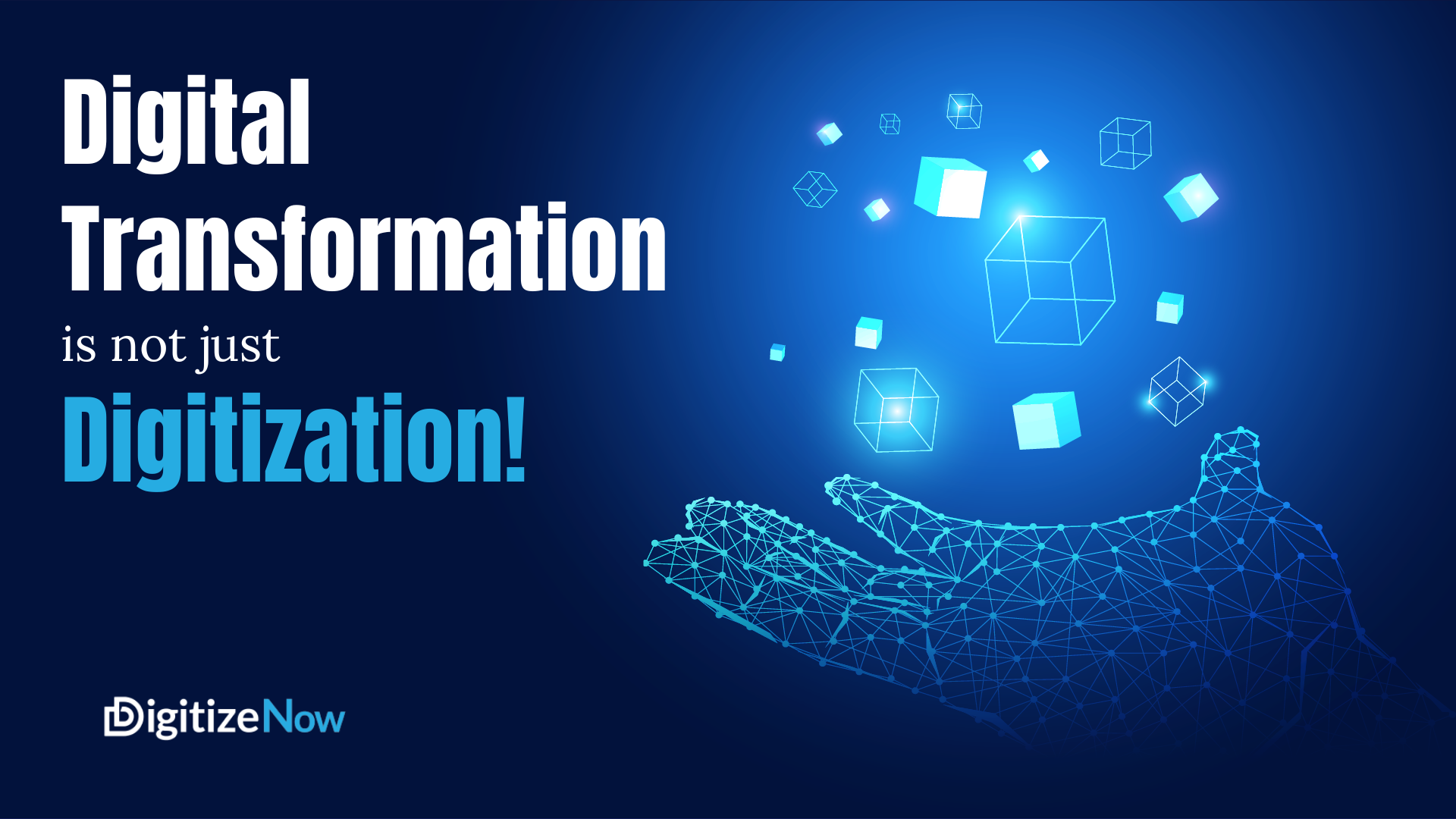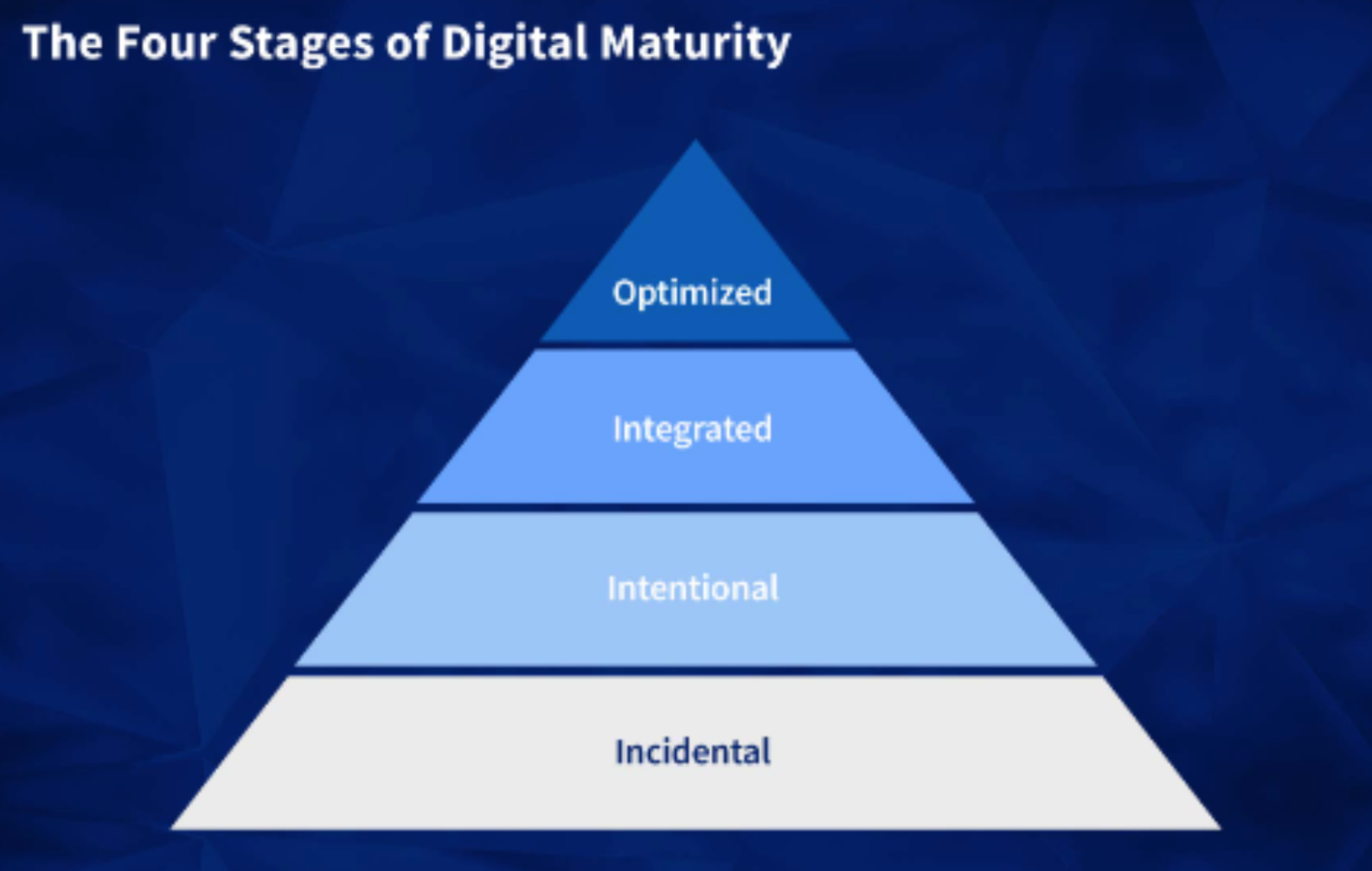Many organizations and companies have embarked on the “digital transformation” journey to stay ahead in business in the digital age. However, there’s a common misconception that digital transformation is merely synonymous with “digitization.”
In the pandemic era, everything has gone digital, from ordering food to doctor appointments. While advancements in digital initiatives have been significant, they have also confused the fundamental business transformation.
Digital transformation is not merely about adopting digital tools; it’s about reimagining the entire business model to stay competitive, relevant, and agile in an increasingly digital world.
Digital transformation and digitization are two terms often used interchangeably, but they represent fundamentally different approaches to embracing the digital age. As a company keen on advancing its digital transformation strategies, it’s crucial to comprehend this difference.
Primary Goals of Digital Transformation
Digital transformation is a comprehensive approach to building a robust digital ecosystem for your organization to stay competitive and relevant, leveraging technology, data, and operational efficiency to benefit employees and deliver value to their users.
In leveraging technologies for an organization, one of the primary goals should be to improve how businesses engage with their users. The correct transformation strategy can offer highly personalized, convenient, and efficient user experiences.
All digital transformation strategy aims to streamline and optimize internal processes, reducing manual work and operational costs. It involves automating repetitive tasks, implementing data-driven decision-making, and using technologies like Artificial Intelligence (AI) and the Internet of Things (IoT) to enhance efficiency.
Another goal is to use data analytics and business intelligence to make informed decisions, anticipate trends, and continuously improve products and processes.
Businesses want to become more agile and adaptable. Using digital transformation, they can respond quickly to market shifts, competitive pressures, and unforeseen disruptions like COVID-19.
Another aim of business transformation is to empower employees by providing them with the tools and skills needed to thrive in the digital age. This involves investing in training and creating a digital-ready culture that encourages innovation and collaboration.
What is Digitization?
Digitization is the process of converting analog information or processes into digital formats. It involves converting physical items, like paper documents, into electronic data that computers can store and process.
Think of a library that digitizes its collection of books and documents. They scan printed books and create digital copies (e-books) that can be stored on computers or e-readers. This process makes the content searchable and accessible online.
Digitization simplifies data storage and retrieval, making finding and using information easier. It eliminates the need for physical storage and reduces paperwork. However, it still needs to change how the library operates or how people use the books.
For customers, digitization might mean improved service, such as faster responses and easy access to information. It enhances customer experiences by making interactions more efficient.

Digital Transformation in Practice
Although post-COVID-19, the digital era has skyrocketed, many companies have expressed concerns regarding employees adapting and showing resistance to new transformation strategies and leveraging technology to keep up in the digital age.
Digital transformation is not just a process of converting but rather adopting a more digital-focused mindset.
Let’s go through some of the real-world examples of including digital transformation strategies in these global companies to leverage their existing data and technologies, increase operational efficiency, and bring out higher revenue.
We are taking P&G as a starting example that we can look at in terms of transformation by integrating IoT sensors into their products, creating a connected ecosystem. They use data from these sensors to understand consumer usage patterns and improve product development.
P&G’s approach goes beyond simple data collection. It involves a holistic change in how they understand and engage with consumers, influencing product design, marketing strategies, and overall business operations.
Another example of adopting transformation in the digital age is General Motors, where they implemented IoT and AI in their vehicles, creating smart, connected cars. This involves predictive maintenance, autonomous driving capabilities, and enhanced in-car entertainment systems. General Motors’ digital transformation is a shift from traditional manufacturing to creating intelligent, connected vehicles. It’s about redefining the driving experience and preparing for the future of transportation.
We can always talk about Siemens, where they implemented digital twin technology, creating virtual replicas of physical products and systems. This is used for simulation, testing, and ongoing monitoring, optimizing the entire product lifecycle. Siemens‘ digital transformation is a paradigm shift in designing, producing, and maintaining industrial equipment. It’s about creating a digital thread that runs through the entire lifecycle, from design to end-of-life.
Through its website and apps, Nike has transformed digitally by focusing on direct-to-consumer (DTC) sales. They use customer data and analytics to offer personalized product recommendations, online workouts, and a seamless shopping experience. This strategy has increased online sales and improved customer engagement.
The Role of Strategy in Digital Transformation
A well-defined digital transformation strategy is the roadmap that guides an organization through its transformation journey. It serves as the foundation for aligning technology and cultural change with business objectives.
With a clear strategy, transformation efforts can be cohesive, efficient, and connected to overarching goals. A strategy ensures that everyone within the organization is moving in the same direction.
It begins with a clear vision of what the organization aims to achieve through measurable goals and becoming a market leader in customer-centric digital experiences. It also requires identifying and adopting the right technologies that align with the organization’s goals.
Depending on the industry and objectives, this might involve investing in cloud computing, data analytics, the Internet of Things (IoT), or artificial intelligence (AI).
Staying up to date with industry trends and emerging technologies is essential. The strategy should include provisions for regularly assessing and incorporating new technologies and best practices.

Application of Digital Transformation
E-Commerce and Retail:
The digital transformation has revolutionized the retail industry. Companies use e-commerce platforms, data analytics, and AI to offer personalized shopping experiences. Amazon’s recommendation engine suggests products based on user behavior and purchase history, enhancing customer engagement and sales.
Healthcare:
In healthcare, digital transformation has led to telemedicine, remote patient monitoring, electronic health records, and AI-powered diagnostics. Nowadays, healthcare users are offered virtual medical visits, enabling patients to consult with doctors online. This transformation has become even more crucial during the COVID-19 pandemic.
Manufacturing:
Manufacturing industries employ IoT, robotics, and data analytics to optimize production processes and predictive maintenance.
Financial Services:
In banking and finance, digital transformation involves online banking, mobile apps, and blockchain technology for secure and efficient transactions. PayPal provides digital wallets and online payment solutions, making it easier for users to conduct online financial transactions securely.
Entertainment and Media:
Virtual reality experiences and personalized content recommendations have transformed entertainment and media streaming services. Netflix uses data analytics to recommend TV shows and movies to viewers, making the viewing experience more tailored to individual preferences.
The journey of digital transformation is far more profound than mere digitization. It transcends the simple act of converting analog data into digital formats. Instead, transformation strategy represents a holistic and strategic shift that reimagines the very core of how organizations operate, deliver value and engage with their customers.
From e-commerce giants like Amazon to the healthcare industry’s embrace of telemedicine, the applications are as diverse as they are transformative.
In today’s digital age, staying competitive and relevant demands more than incremental changes. It calls for a reevaluation of business models, an embrace of technological possibilities, and a cultural shift toward agility and innovation.
Embrace technology, envision new possibilities, and redefine your operations. It’s not just an evolution; it’s a revolution that will shape your organization’s future in the digital age.



